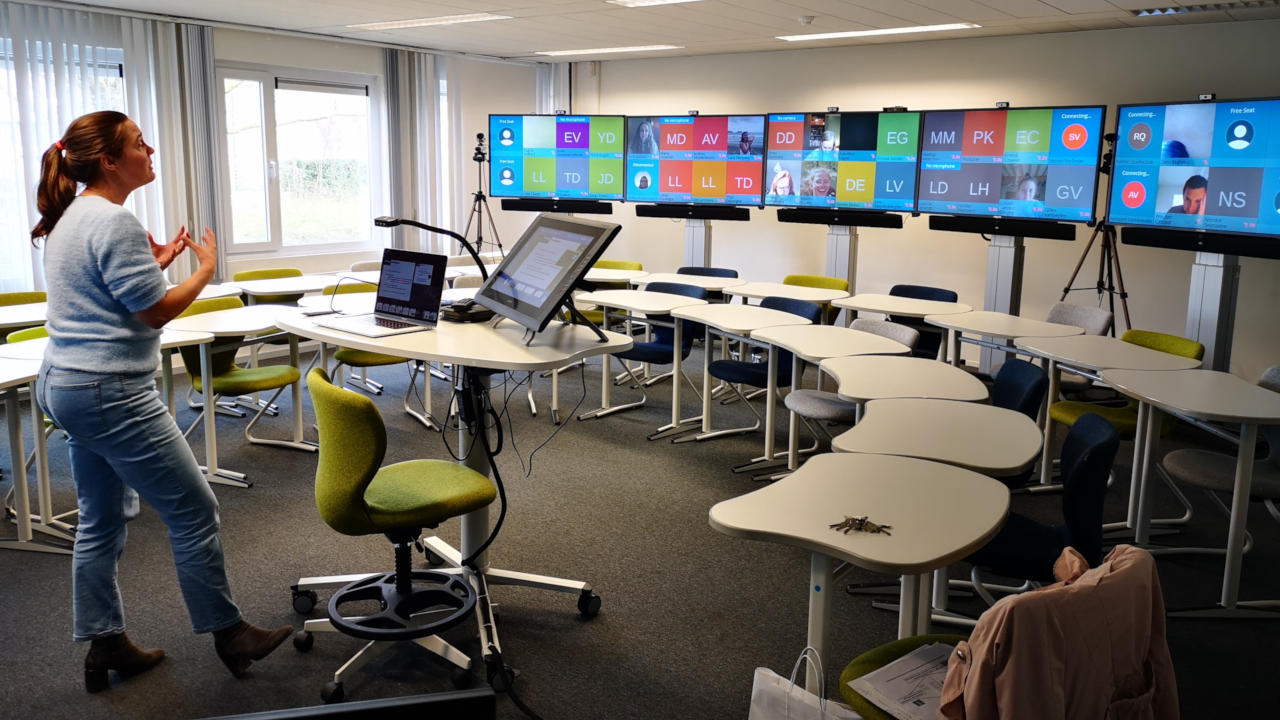Rapid Adaptation in K-12: Technology at a Break-Neck Speed
While most markets are reeling from the COVID-19 pandemic, K-12 education has seen the most disruption to its core service model.

Here at the Audiovisual and Integrated Experience Association (AVIXA) we keep a watchful eye on the developments within what we call the end user markets, such as education, to understand how trends within and across these markets are shaping the demand for AV products and services. From this vantage, the story of K-12 stands out among the others.
While most markets are reeling from the impacts of the COVID-19 pandemic and can rightly point to it as perhaps the most trying period in recent memory, K-12, in particular, has arguably seen the most fundamental disruption to its core service model. It is hard to imagine a more abrupt and forced adaptation. Although most of us can’t go to live sporting events en masse, broadcast platforms already existed for us to watch from home. While retail suffers from lack of foot traffic, e-commerce has kept consumption alive. And while we aren’t travelling as much or staying in hotels, social-distancing precautions and protocols can enable us to stay safe when we do. Even corporations had already begun their investments to support remote work and telecommuting through video conferencing and collaboration solutions.
But in K-12, more than higher education, no one had really focused on how to support 100% distance learning for school districts across the country. Sure, some classroom extensions existed, but none of it was near the scale that was ultimately needed, particularly for the early grades. In the space of days, schools, teachers, students, and parents were left with the need to transition to learning from home, and to acquire and implement the technology to do so.
I think we can all agree it hasn’t necessarily been pretty. Existing solutions were not necessarily prepared for the scale required. Learning content had not been originally developed with distance teaching in mind. The traditional class structure and schedule itself was not designed with screen delivery as the primary mode of interaction. And technology access is not evenly distributed throughout the population, leaving behind many kids. Along the way, health and safety guidelines made it impossible to allow a return to in-person in all cases, at least not without significant investment of funds, which are not readily available in many state budgets.
What has this meant in terms of technology adoption? AVIXA’s industry forecasts for pro AV spending, called the Industry Outlook and Trend Analysis (IOTA) reports, show the education industry investing $22.4 billion in 2020, down somewhat from 2019. The reports also project that growth returns in 2021 and spending exceeds the previous peaks. Looking out to 2025, these investments are expected to continue to grow at a compound annual growth rate of 4.3%. Some of this growth will be in higher education, and some in K-12, though that component is limited by the availability of funds.
The types of technologies represented are varied. Video projectors remain a key component to many classrooms, depending on size, particularly in higher ed, and so are the single largest area of investment. This is despite a gradual shift toward flat panel screens across many parts of the world. However, the second largest area of investment is in back-end infrastructure to support distance learning and content management. These are the media servers and storage that facilitate content routing. AVIXA estimates educational institutions will invest $4.2 billion to these technologies in 2020 alone.
There is more to the technology investment story than the numbers show however, which may suggest a coming wave of investment. Given the rapid nature of adaptation, AV managers and solution providers serving the education market have pointed out that much of the current wave of investment was devoted to quick fixes and solutions. Some of these worked well and others not so, or not optimally. Thus, an iterative wave of replacement and upgrade is expected as better options for existing problems emerge in the market.
Tools and ideas to transform education. Sign up below.
Ultimately, K-12 and the education market represents an exciting, if not challenging, environment in which technology plays a vital role in continuing to nurture the minds of our children. For technologists, the opportunities abound even as they strive to ensure solutions that work for all parties, from students and parents to teachers and administration.
Here’s to finding the best and most viable path forward as two industries working together – AV and K-12.
Sean Wargo is Senior Director of Market Intelligence for AVIXA, the Audiovisual and Integrated Experience Association. He is responsible for helping AVIXA realize its strategic goal to become the authoritative source for market intelligence in the AV industry through data capture, analytics expertise, insight delivery, and world-class market research. Sean was formerly the Vice President of Research at BDS Marketing, LLC and Director of Industry Analysis at the Consumer Electronics Association.
